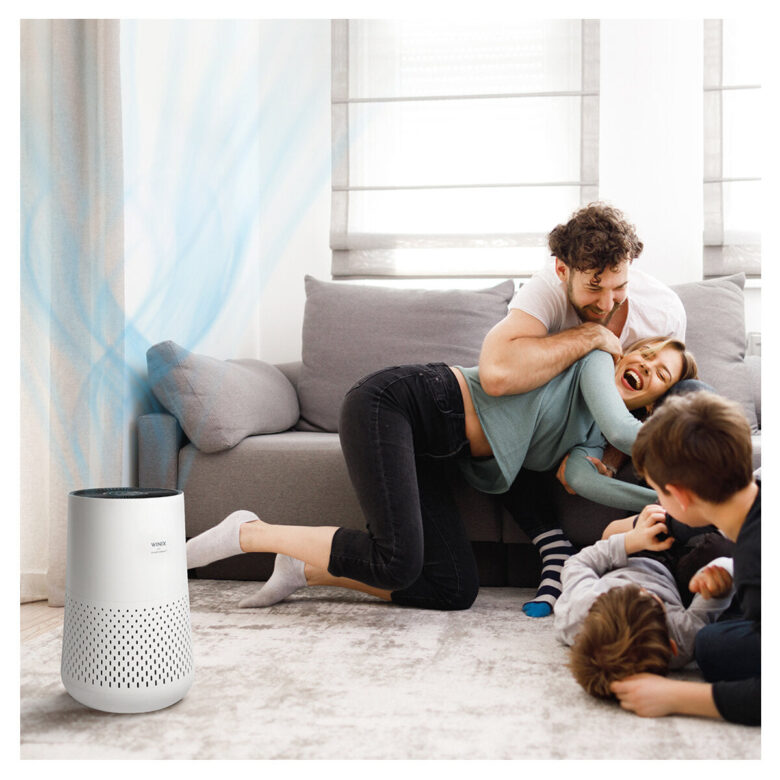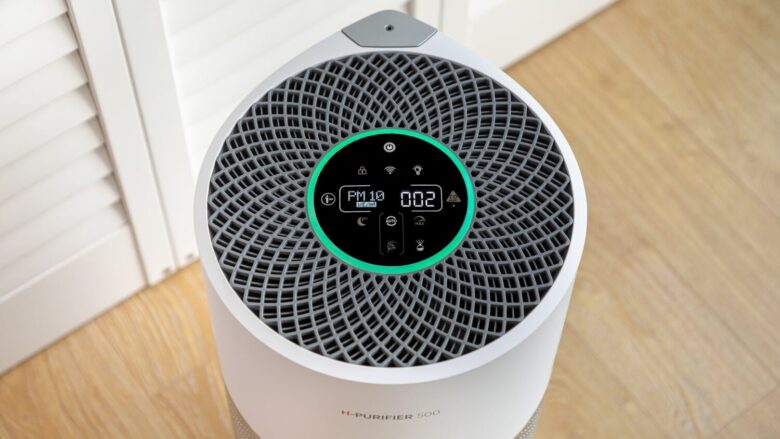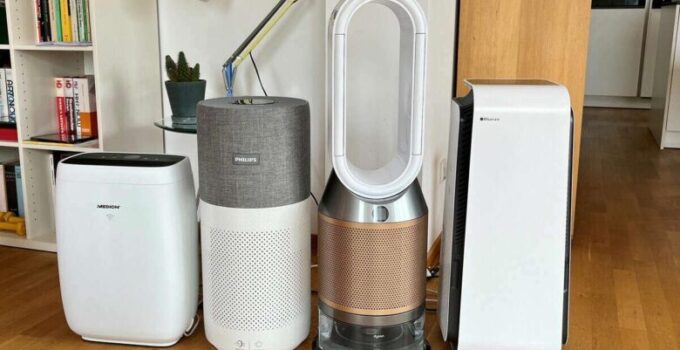The best way to choose a model for yourself is to use the air purifier configurator on my site. The configurator is a database of most models available on the market, which by answering a few questions you will narrow down to the model that fits your preferences.
For a comprehensive guide on the best wall-mounted air purifiers, check out the detailed insights and recommendations available at https://verywellhome.com/best-wall-mounted-air-purifier/.
When choosing an air purifier, we should pay special attention to the following parameters:
Purifier and the size of the room

Source: self.com
The first important parameter in choosing a purifier is the square footage of the area for which it is dedicated. Such information can be found either on the package of the purifier or on the price label/product card of the product.
When choosing a device, you need to consider the size of your living room or bedroom and not the entire apartment! Remember that the air purifier works practically only in the room in which it is located. You can always move the device from one room to another of similar size, but then naturally the air quality in the room without the air purifier will decrease.
CADR- efficiency of the purifier
Many manufacturers also use an international parameter for the efficiency of purifiers called CADR (short for Clean Air Delivery Rate), which tells us how many cubic meters of air the purifier will filter per hour. The higher this parameter, the faster the device will clean the air. According to the information I gathered during the creation of the purifier configurator, a good purifier should filter the air in a room three times in an hour!
Let’s assume that your living room has a living room of 30 m². Multiply the area of the living room times its height of 2.4 m and you get a room volume of 72m³. Now we multiply 72m³ times 3 and we already know that the CADR of the purifier for your living room should be min. 216 m3/h.
What filters in an air purifier?

Source: healthyhabitats.com.au
A very important parameter in choosing a purifier is the method of filtration. Some devices have only one filter, while others have several. It is known that multi-stage filtration is the most effective.
The most popular filters are:
- pre-filter, which traps the largest impurities: hair, epidermis, hair;
- carbon filter- effectively neutralizes all unpleasant odors, as well as gases hazardous to health, including volatile organic compounds such as benzo[a]pyrene, benzene or xylene. The filter consists of granules of activated carbon, which is an excellent absorbent. Particles of various pollutants “adhere” to it in two ways – chemical or physical, and the carbon itself can absorb substances close to 20% of its own weight. This property is due to its porous structure;
- Hepa filter-is the heart of the air purifier. Thanks to its structure, it perfectly captures all particulate matter. For this reason, it is used wherever it is necessary to remove dust, dust, allergens and smog from the air. In addition, this filter also shows effectiveness against many types of bacteria and viruses.
HEPA H13 (99.95%) or EPA E12 (99.5%) filters are most commonly used in home air purifiers. Their effectiveness is completely sufficient for such conditions, and the price is affordable for a household budget. Some more professional models, use HEPA H14 (99.995%) filter. However, such a solution is relatively rare, as the high efficiency of this class of filters is also accompanied by high operating costs.
Operating costs, or filter replacement
Each filter has a limited life span. In order for purification to be effective, filters must be changed regularly.
In some devices you need to change the filters every six months or a year, while in others it is enough to do it once every 10 years. It all depends on the quality of the filters, how often you use the purifier and the degree of pollution in the environment in which you live.
The spread in the price of filters can also be quite large, as there are filters for $10 as well as for $70.
Volume of the purifier

Source: cnn.com
When choosing a purifier also pay attention to its volume. The sound of the device working in the bedroom where we sleep can annoy us a lot when we are just trying to fall asleep. Remember that a difference in volume of 3 dB is perceived as twice as loud.
Some devices have a special operating mode called “night”. By selecting this mode, the device will run quieter than in daytime mode, and in addition, the control panel will dim so as not to dazzle us in the bedroom.
Air quality monitoring
It is worthwhile for the purifier to monitor and signal us the quality of the air, and if it deteriorates, it will automatically intensify its work to remove the pollution as soon as possible.
Some models can inform us about the air quality through a colored LED indicator (green color means – clean, red color – dirty, and others can continuously display the current concentration of PM 2.5 particles.
Size and aesthetics

Source: expertreviews.co.uk
Also pay attention to the size and aesthetics of the purifier, because an air purifier is not a seasonal device! This is equipment that should serve you all year round – cleaning the air of dust, bacteria, dust mites, pollen, cigarette smoke and kitchen odors.
Some models are so visually appealing that they can decorate your living room!
What else to look for when choosing an air purifier?
An air purifier can have these many additional functions, which can be very useful:
- humidification;
- Plasmacluster ionization, which removes dust mites, fungi, molds, allergens from our environment;
- parental lock;
- remote control with a mobile app;
- monitoring of filter wear and informing about the need to replace them;
- programming of the working time of the device.
Do not delay, choose a purifier for your home and enjoy clean air all year round!
Сonclusion
In conclusion, selecting the right air purifier involves a multi-faceted approach. You should first consider factors such as room size, CADR rating for efficient air cleaning, and the filtration method. Multi-stage filtration with pre-filters, carbon filters, and HEPA filters is highly effective. Be mindful of operating costs related to filter replacement, as these can vary greatly. Additionally, consider the volume and noise level of the purifier, especially if it’s in a bedroom. Models with “night” modes offer quieter operation.




